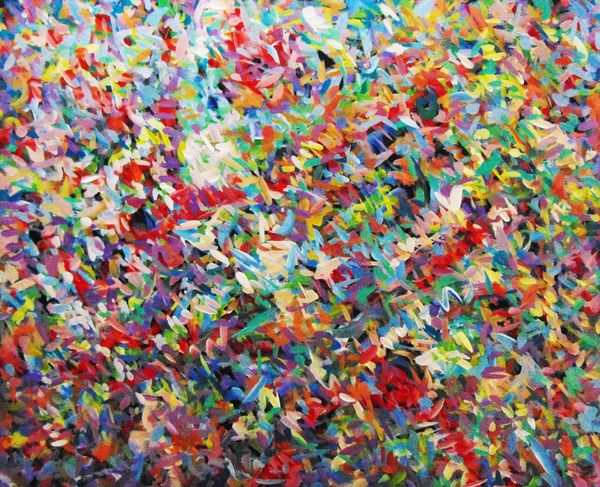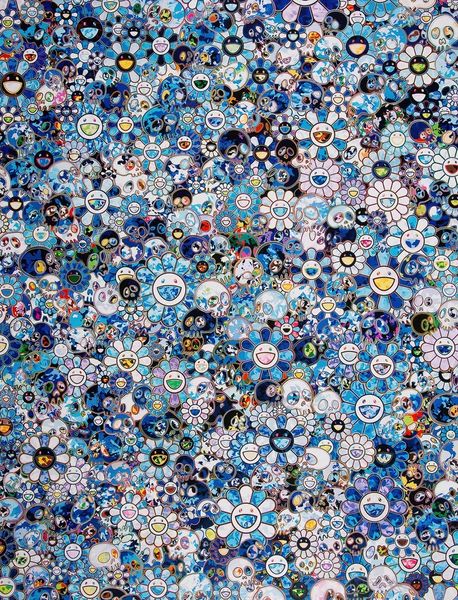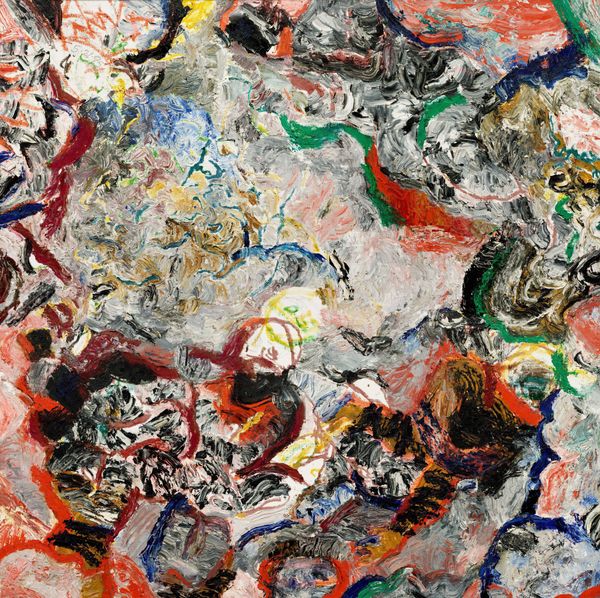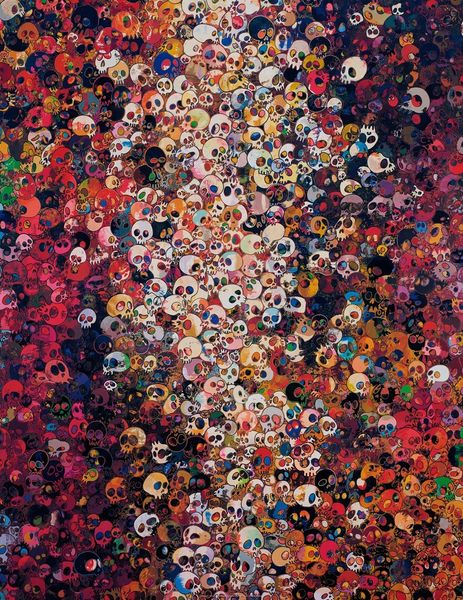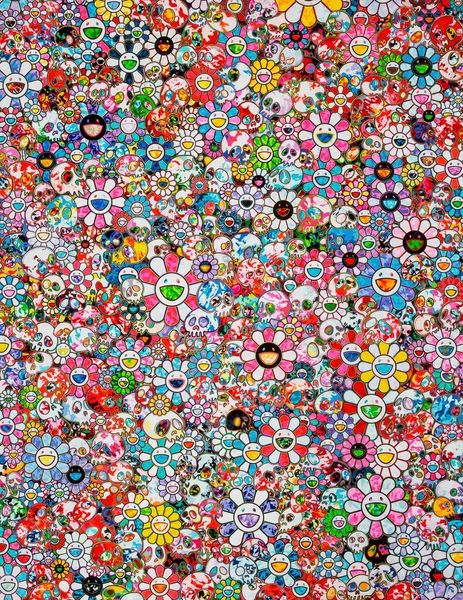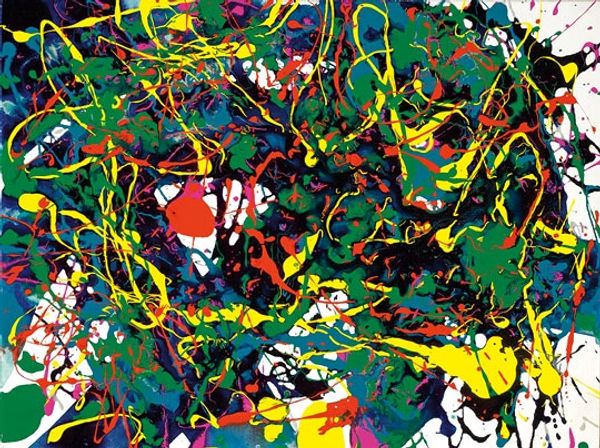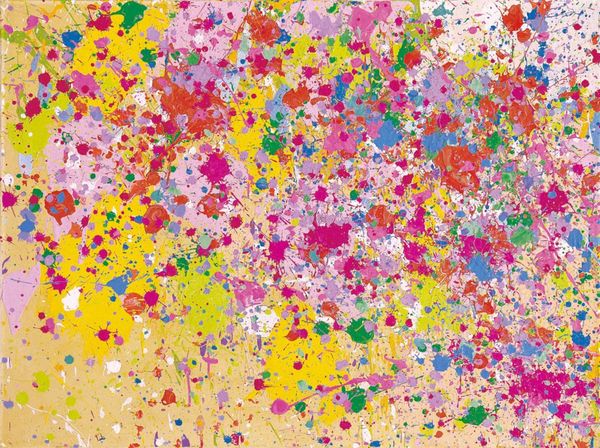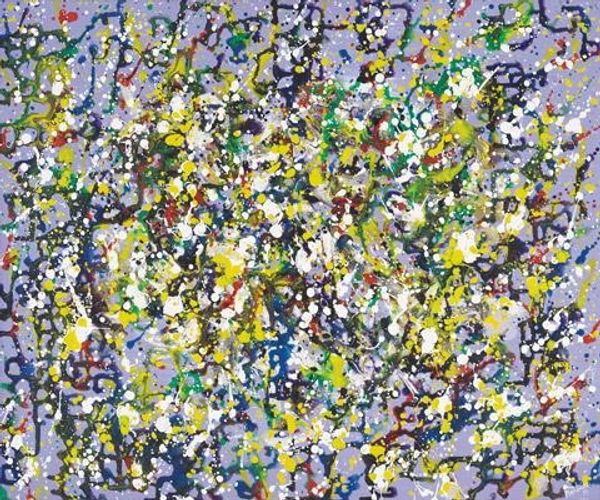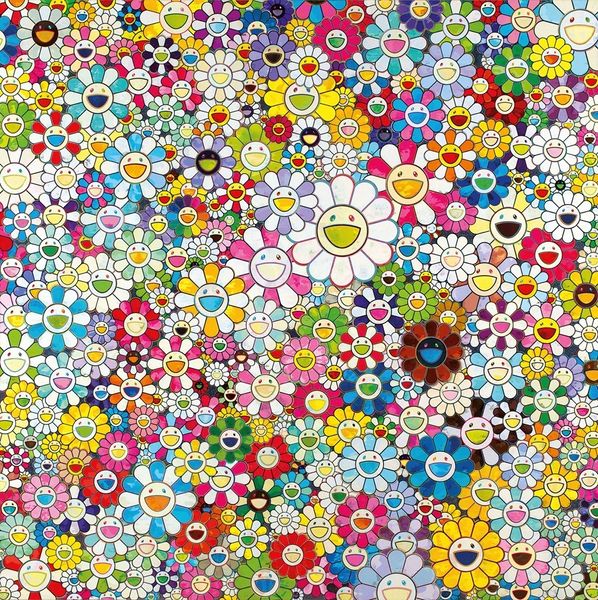
#
neo-pop
Copyright: Modern Artists: Artvee
Editor: We're looking at Takashi Murakami's "A Fork in the Road," from 2020, crafted with acrylic paint. At first glance, it's a bit overwhelming, a riot of skulls vying for attention. What do you see in this piece? Curator: The compositional strategy is fascinating. Notice the relentless repetition of the skull motif. It creates a flattened picture plane, almost dissolving any sense of depth. Color, rather than line, defines the individual forms. How does the variation in color interact with this repetition, in your view? Editor: Well, it’s chaotic, but somehow contained. The colors are so bright, they almost mask the macabre subject matter. Do you think that contrast is intentional? Curator: Undoubtedly. Consider how Murakami deploys the vanitas theme through a hyper- Pop lens. The insistent flatness and seriality reject traditional notions of mimesis in favor of a system where form anticipates meaning, thus generating visual excess. Do you agree? Editor: Yes, I see what you mean. The excess kind of nullifies the darkness, making it almost playful, even though we’re confronted by death. I’d never have noticed that without your analysis of the colors and shapes creating that feeling. Curator: Precisely. By attending to these formal strategies, the painting gestures beyond simple symbolism. It pushes us to think about visual consumption and our relationship with symbols. Editor: It’s interesting how a piece that seems so immediate on the surface can hold so much complexity in its construction. I'm going to have to spend more time looking at this artist’s work! Curator: Indeed! Visual language allows us to read art from varying critical positions, constantly revealing fresh layers and nuances in their execution.
Comments
No comments
Be the first to comment and join the conversation on the ultimate creative platform.
